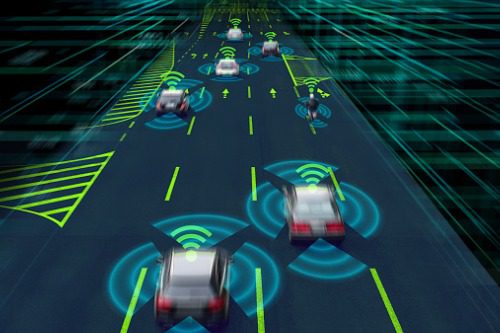Forecasting Fleet risks with First Notification of Risk Technology

Authored by HDI Global
Drivers, managers, insurers — we’re all looking for a way to stop accidents from happening.
Since the launch of HDI Global’s telematics-based Motor Fleet coverage in 2012, we’ve witnessed the impact of telematics technology and the way it can improve fleet efficiency and driver safety. When it first came to the market, telematics technology quickly garnered a reputation among some drivers for enabling a “big brother” culture. HDI Global had long recognised however that telematics had the potential to move the fleet world closer to the “crystal ball” that it had been searching for.
Before it was invented, fleet managers had no understanding of what was occurring in their vehicles and on their property. As it developed, telematics has been able to reduce this opacity and bring a better understanding of what drives the activity that ultimately leads to claims.
The ability to track vehicles empowered fleet managers to plan more efficient deliveries and routes. The data derived from telematics devices unlocked patterns in how driver behaviour positively impacted key fleet performance metrics, like fuel efficiency, when drivers observed speed limits and adopted a smoother driving style.
The addition of in-cab video and analysis came along to provide a fuller picture of what was happening on the road, becoming a necessary tool to help mitigate the challenges fleet managers were encountering. The benefits of this technology began to far outweigh any of its negative perceptions.
First Notification of Risk – going a step further in the prevention of risks
The next development in telematics is now here, with First Notification of Risk (FNOR) technology taking incident prevention to the next level. FNOR doesn’t just predict risks, but helps prevents them. By taking a proactive approach to fleet safety, using dashcams enhanced with Artificial Intelligence (AI) and Machine Vision (MV), FNOR identifies a driver’s risky behaviours and alerts them to self-correct.
While they may be professionals, drivers are human and from time to time we all display risky behaviours. With most accidents being caused by avoidable distractions, such as someone picking up a phone or drinking whilst driving, FNOR alerts a driver in real-time, reminding them to put down their phone or water bottle and pay attention to the road. That is true risk prevention – preventing potential incidents from happening and reinstating focus and attention.
How insurers and fleets can work together – the HDI approach
All of this technology in itself is not the final solution. By installing it you do not immediately realise the benefits of reduced fuel costs or a reduction in incidents. Those are all by-products of better driving behaviours, and drivers only improve when managers proactively use telematics data to educate and provide coaching to drivers. Organisations should see telematics and camera solutions as learning tools that can guide them on their journey to fleet risk utopia.
At HDI Global, we work with clients to review their telematics data to reveal a holistic view of a company’s risk profile. Our skilled and experienced risk managers can look at the data to see if driver behaviour is improving. We set targets for our clients such as claims frequency and average cost of claims per vehicle. Companies that use FNOR to help drivers reduce their distracted driving behaviours, using their telematics data to manage driver performance and offer coaching when needed, will see the rate of incidents and claims falling. This may help them see a reduction in their premiums.
This growing trend of cooperation between insurers and fleets to leverage advanced technology like FNOR is going to have a positive impact on fleet safety now, and in the future.
For drivers, the upside to safer driving is that they’re going to arrive home every night. For employers, video with AI and MV potentially saves lives while benefiting the company’s efficiency, bottom line, and reputation for safety.
A shared responsibility to create safer roads
It’s everyone’s responsibility, including ours in the insurance business, to address the safety of the people on the roads. Drivers work in a very stressful environment. It’s the employer’s duty to make sure those drivers are looked after and return safely at the end of the day. From an insurer perspective, we don’t only see it as our job to worry about compliance and regulation, but also to advise the client and help them improve their risk management processes. After all, the best way to keep fleets safe is by avoiding incidents in the first place.
About HDI Global
We have a distinctive approach to Motor Fleet insurance, focussing on clients that want to embrace risk management and manage the way their employees drive company vehicles. Working with the client’s existing telematics technology and provider, we use data analysis to encourage improvements in driver behaviour, resulting in reduced claims activity, premiums and overall fleet running costs.
If you are an insurance broker and would like to find out more about our Motor Fleet proposition, as well as our other lines of business and services, please contact Oliver Davies, Head of Distribution:
Telephone: +44 7786 100198
To email Oliver Davies CLICK HERE





